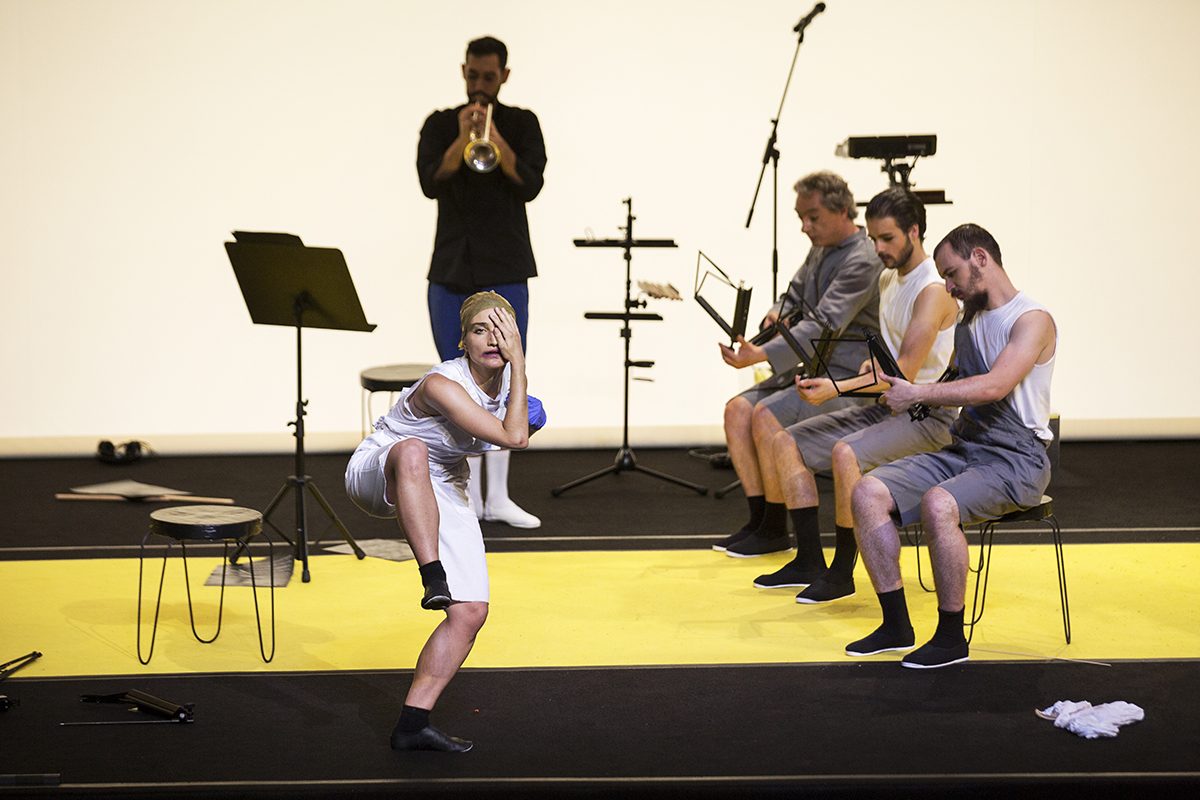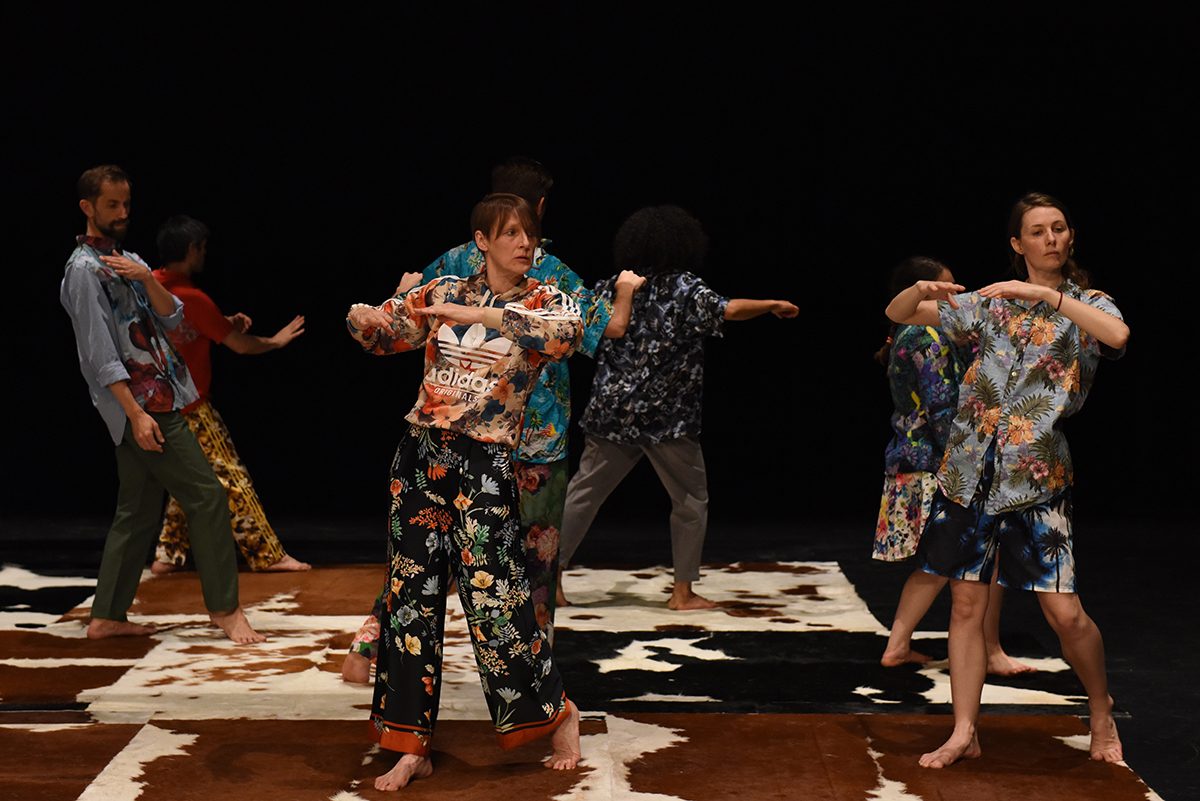In Mirrors, Stories of Almost Everyone (2009), Uruguayan writer Eduardo Galeano examines the revolutionary writings of Copernicus, who founded modern astronomy while failing to cite the influence of the Arab scientists who informed his thinking. On this absence of Eastern learning in the Western record, Galeano writes that “Europe looked in the mirror and saw the world. Beyond that lay nothing.”
The exhibition headliner for the 2017 Kunstenfestivaldesarts — a festival with a reputation for innovative, large-scale contemporary work — is The Absent Museum. Its curators call for new grand narratives and new institutions to rewrite the omissions and wrongs of the past. Galeano is quoted in the catalogue essay: “As Europeans, we could simply keep on looking in the mirror and see the whole world… but would we not increasingly have to turn a blind eye, squint, or turn away in order to maintain that pernicious fiction?”
With the catalogue essay in mind, I spent a week sampling works in the festival. Would I find new grand narratives or new ways of telling stories?
Small Tragic Opera of Images and Bodies in the Museum
The implications of the colonising impulse were examined through the lens of the art institution in French installation and performance artist Lili Reynaud-Dewar’s Small Tragic Opera of Images and Bodies in the Museum. In it, a self serving artist has used images of a community oppressed by police violence for his exhibition, without credit or care. We enter the gallery through the crowd of performers who wait and fiddle nervously. Separated into groups, each with their roles printed on full-length satin smocks, we see them become “museum staff,” “critics,” “curator” and “artists.” In song, they begin to outline responses to a fictional museum that has presented an artist’s images of a community oppressed by police violence. Behind the performers, the lyrics are printed on plastic billboards. We’re in Brechtian territory here. Reynaud-Dewar, whose work often considers race, ownership and representation, asks who has the right to tell what story — in fabulous techno style.

Bacchae: Prelude to a Purge, Marlene Monteiro Freitas, photo Filipe Ferreira courtesy Kunstenfestivaldesarts
Bacchae — Prelude to a Purge
A choreographer from Cape Verde, now based in Lisbon, Monteiro Freitas interprets Euripides’ text without any clear narrative form, but rather as a circular series of oppositional tones, taking us from order to chaos and back again. Five trumpeters slowly enter the stage space, joining five dancers already in theatrical poses among microphones densely scattered across a bright yellow carpet. The text is distilled into two urges: rational and irrational, Pentheus and Dionysus. Loud or soft, together or alone. Binaries roar at us through frenetic choreographic sections.
Adena Jacobs’ company Fraught Outfit caused a stir in Australia a few years ago when she handed control of performing the irrational bodies of The Bacchae to a company of teenage girls [see John Bailey’s review]. Here, performers are similarly sexual, ridiculous, melodramatic, competitive. There is slapstick (a microphone stand allows a performer to mime masturbation, musicians spit out fountains of music at a triumphant climax), cabaret (a crooner seduces us with his exuberant wailing), krumping, mime. Freitas insists on new, more complex narratives, screaming at a dying Europe: “We are alive we are alive we are alive!” Two and a half hours later, the dancers and musicians are exhausted and so are we.
Gerhard Richter, une pièce pour le théâtre
Much quieter in its exposition is Mårten Spångberg’s Gerhard Richter, une pièce pour le théâtre. Spångberg, the ‘bad boy’ of contemporary dance, is more of a hero in Brussels (and in Australia) than in his native Sweden. And he is getting old, which is terribly inconvenient for an enfant terrible. Here, he explores his maturation by selecting “older” dancers (the festival website informs us they are all over 40!).
On a set which could be a 3D model of one of German painter Gerhard Richter’s abstract compositions, the dancers hold inane conversations about ageing. As texts are repeated, played out in different configurations of performers, authorship disappears. Slowly sources emerge; I recognise segments from movies — Lost In Translation and Stepmom. I’m embarrassed that Julia Roberts’ goodbye to a dying Susan Sarandon has been stored in my mind: “And my fear is she’ll think: I wish my mom were here.” Spångberg relies on collective unconscious retention of such quotations, using them as bland examples of the universality of existential crisis.
Abstracted from the context of plot or character, the texts become empty gestures. Movements, like the words, are passed from one performer’s body to another. Dancers pick up a sequence — generally slow paced, always elegant in quality — and play with it, only to be joined by a copycat, or two or three. Slowly they drop off, distracted by joining in on a conversation, or exiting the stage to swap clothes. Using anti-spectacle and ennui, Spångberg urges us to contemplate the ways we look forward and back, as though by studying our melancholic musings we might re-examine how and when change actually occurs.
The Baudouin / Boudewijn Experiment
Carsten Höller’s Baudouin / Boudewijn Experiment is a 24-hour show with no stage, no actors, audiences relieved of their phones and not allowed back in if they exit. No documentation of any kind is offered and the piece has an incredibly minimal structure: doors close, the audience is fed three meals, the audience must decide what to do with its time.
This ‘invisible work,’ as it is called in the festival program, is a recreation of a 24-hour ‘sit-in’-style protest at the Palais de la Dynastie, a building constructed to welcome the heads of state during Expo 58. In 1990, 100 people rallied against the King of Belgium who had refused to assent to a new abortion law.
The festival program states, “the experiment will only survive in the accounts given by the participants.” So…
We enter a large room owned by the royal family. “It’s not a palace,” I hear someone whisper, “It’s just a spare building for events.” It’s marble and the room we are standing in could house a three-storey apartment building. There are canteen-style picnic tables, as though a mess hall has been set up. There are bunk beds. No performers seem to be present, no text accompanies us. We are locked in for 24 hours.
We are waiting for some kind of action or instruction, for the appearance of a facilitator or for a conceit to emerge (half the participants are actors and they have started a fight!) or (there isn’t actually any food, you’ll have to cook for yourselves or starve!). Nothing so dramatic happens — there was wine, conversation, boredom… but no activist organisation, no revolution. It seems the masses have no clear imperative with which to revolt.
This absence of a clear direction forward resonated across the festival, despite the opening exhibition’s call for change or works that referred back to the time of singular history. From what I saw, although there was discussion of change and even desire for it, actual revolution is yet to come — it seems Galeano’s “blind eye” continues to dominate.
–
2017 Kunstenfestivaldesarts: Lili Reynaud-Dewar, Small Tragic Opera of Images and Bodies in the Museum, BRASS, 5-7 May; Marlene Monteiro Freitas, Bacantes — Prelúdio para uma purga, Halles de Schaerbeek, 5-8 May; Carsten Höller, The Baudouin / Boudewijn Experiment, Palais de la Dynastie, 8-9 May; Mårten Spångberg, Gerhard Richter, une pièce pour le théâtre, KVS_BOL, 11-14 May; WIELS, The Absent Museum, Brussels, 18 April-13 Aug
Top image credit: Small Tragic Opera of Images and Bodies in the Museum, Lili Reynaud, photo Benjamin Boar courtesy Kunstenfestivaldesarts




